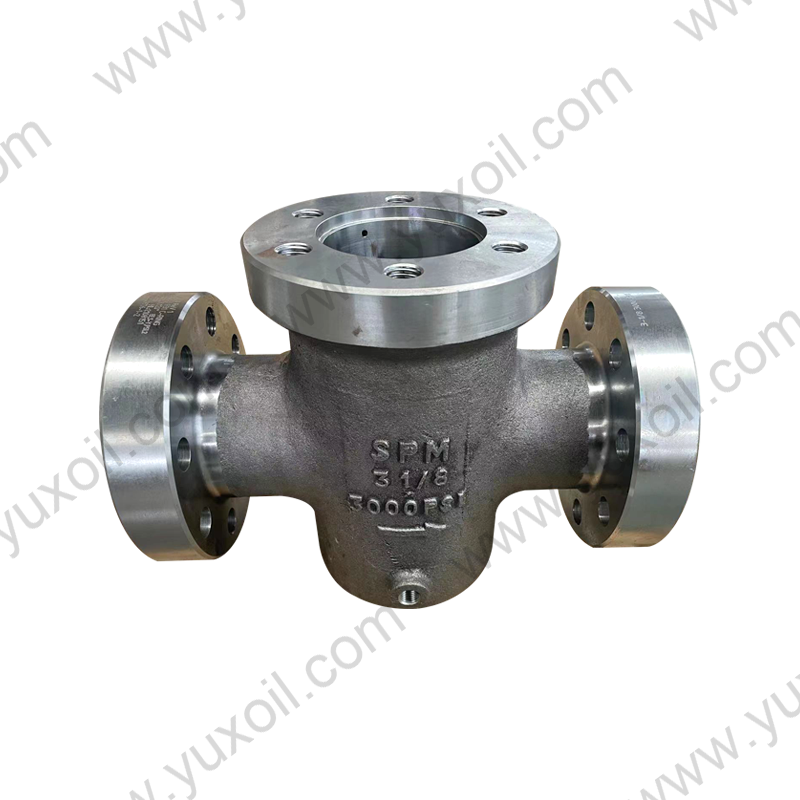In the process of oilfield development and production, High Pressure Oilfield Valve is one of the most critical pieces of equipment. These valves must not only withstand high pressure and high temperature but also resist corrosive media such as hydrogen sulfide (H₂S), carbon dioxide (CO₂), and saline water. Choosing the wrong valve can lead to serious leakage, shutdowns, or even safety accidents. Therefore, proper selection and scientific procurement are essential for oilfield enterprises.

I. Key Selection Criteria for High Pressure Oilfield Valves
Working Pressure and Temperature Range
In oilfield applications, working pressure and temperature are the primary factors determining valve reliability.
- Pressure rating: Common API 6A valve ratings include 2000 psi, 5000 psi, 10000 psi, and even 20000 psi. Always match the valve rating to the actual wellhead pressure.
- Temperature rating: API standards classify temperature ranges into grades such as K, L, P, and R. For example, K grade is suitable for -60℃ to +82℃, while R grade works in higher temperature environments.
If the valve is underspecified in pressure or temperature, it can result in body cracking or seal failure.
Valve Type Selection
Different conditions require different valve types:
- Gate Valve: Low resistance during operation, suitable for full open/close, widely used in wellhead assemblies.
- Globe Valve: Strong throttling capability, excellent sealing, suitable for flow regulation.
- Ball Valve: Fast operation, high sealing performance, suitable for emergency shut-off.
- Check Valve: Prevents backflow, ensuring safety of pipelines and equipment.
Materials and Corrosion Resistance
Material selection is critical to valve durability:
- Carbon Steel: Suitable for low-corrosion environments but limited resistance.
- Stainless Steel: Strong corrosion resistance, suitable for saline and mildly acidic environments.
- Alloy Steel: Designed for high-pressure, high-temperature, and highly corrosive environments, commonly used in offshore oilfields.
Sealing Performance
Seal design determines valve safety:
- Soft seal: Excellent sealing performance but limited in high-temperature and wear conditions.
- Metal seal: Suitable for high pressure, high temperature, and corrosive environments, offering longer service life.
Always confirm compliance with API 6A or ISO 10423 standards.
Actuation Methods
- Manual: Suitable for small-bore, low-frequency operations.
- Pneumatic/Electric: Ideal for remote control and frequent operations.
- Hydraulic: Best for high-pressure wellhead or offshore applications requiring remote operation.
II. Procurement Considerations for High Pressure Oilfield Valves
Certification and Standards
Always ensure the product meets international standards:
- API 6A, API 6D: Applicable to wellhead and pipeline valves.
- ISO 9001, ISO 10423: Quality management and design certification.
- ANSI, ASME: Design and manufacturing compliance.
Strongly recommended: Verify whether the supplier holds the API Monogram, a widely recognized industry certification.
Supplier Reputation and Experience
Choosing a valve means choosing a long-term partner.
- Experienced suppliers can provide proven field cases.
- Suppliers with global service networks can respond faster in emergencies.
Quality Testing and Test Reports
Before delivery, suppliers should provide complete testing documentation:
- Hydrostatic test reports: Validate body pressure resistance.
- Gas test reports: Verify sealing performance.
- NDT (Non-Destructive Testing): Includes ultrasonic and radiographic inspection.
- MTC (Material Test Certificates): Ensure material compliance.
Spare Parts and Maintenance Support
During long-term operation, seals and stems are the most vulnerable components. A reliable supplier should:
- Offer long-term spare parts supply.
- Provide valve maintenance and training support.
- Have local service points to reduce downtime.
Total Cost and Lifecycle
Do not focus only on purchase price! The procurement cost of a valve accounts for only about 20% of its total lifecycle cost. Installation, maintenance, and downtime losses are much higher.
Here is a simplified lifecycle cost comparison table:
| Item |
Share (%) |
Description |
| Initial Purchase Cost |
20% |
The purchase price of the valve |
| Installation & Setup |
10% |
Labor and commissioning costs |
| Operation & Maintenance |
30% |
Regular servicing, seal replacement |
| Downtime & Production Loss |
40% |
Shutdowns or accidents caused by valve failure |
Thus, high-quality valves may cost more upfront but significantly reduce downtime and maintenance costs, making them more economical overall.
III. Common Pitfalls and How to Avoid Them
Pitfall 1: Focusing Only on Price
Many buyers emphasize low cost while neglecting long-term reliability. As a result, cheaper valves fail more often, leading to higher overall expenses.
Solution: Use lifecycle cost evaluation instead of simple price comparison.
Pitfall 2: Ignoring Operational Conditions
Oilfields vary significantly:
- Sour gas fields require H₂S-resistant materials.
- Offshore platforms require corrosion-resistant alloys.
- High-pressure gas wells need metal seals with hydraulic actuation.
Solution: Fully evaluate operational conditions before selection and consult professional engineers.
Pitfall 3: Overlooking After-Sales Service
Some companies focus only on delivery but ignore maintenance and service. Without timely support, valve failures can cause extended shutdowns.
Solution: Choose suppliers with local service teams and rapid response capability.

 2025.09.29
2025.09.29
 Industry News
Industry News
